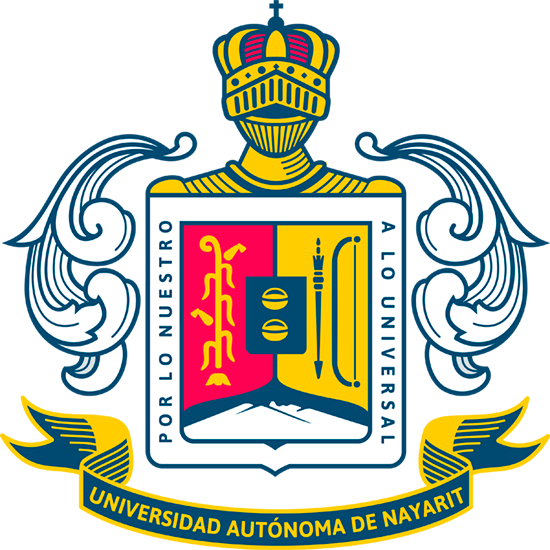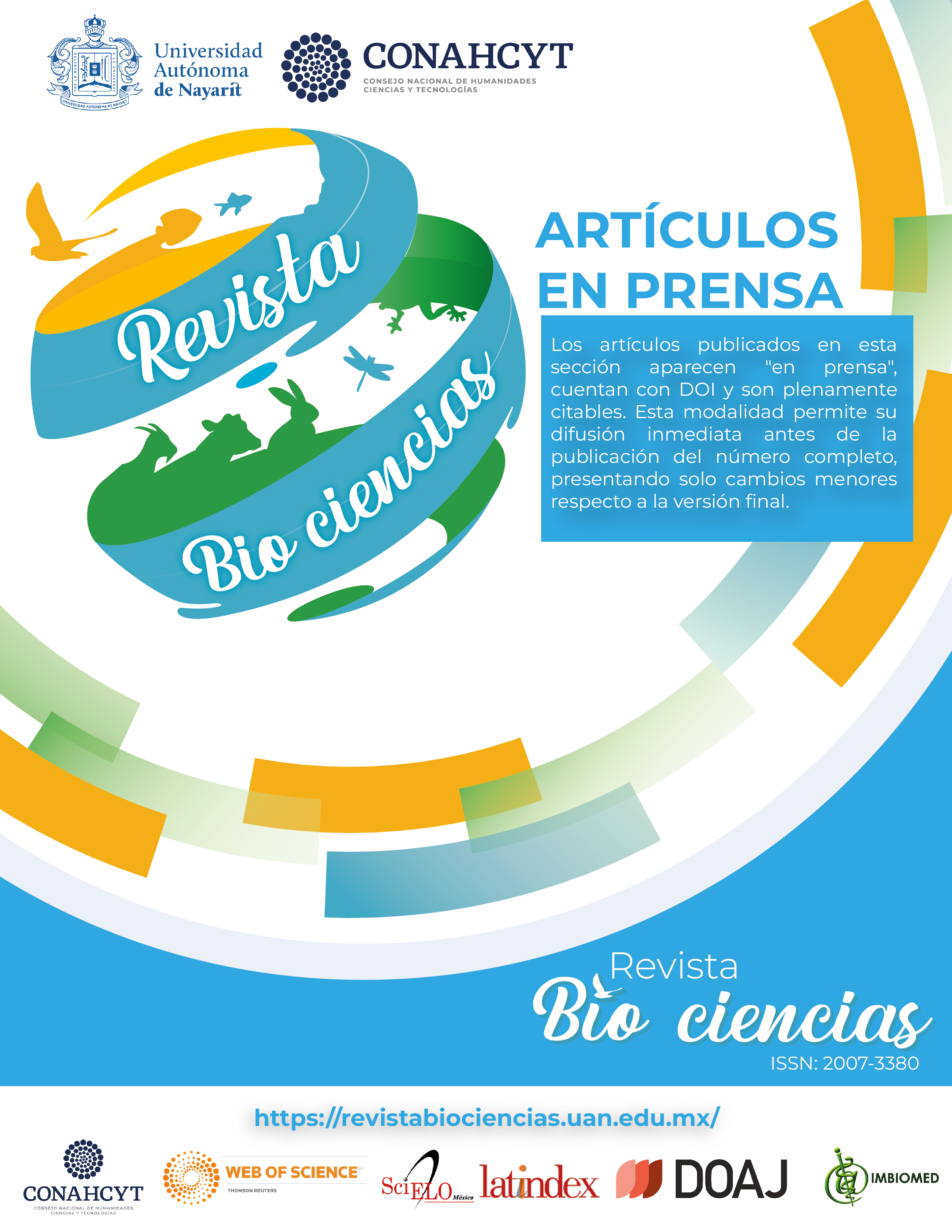Resumen
Los hongos comestibles contienen ácido linoleico, α-linolénico y oleico (ω-6, ω-3, ω-9), ácidos grasos esenciales para el metabolismo humano. Consumirlos en proporciones equilibradas (1:1 o 2:1; ω-6/ω-3) ayuda a prevenir obesidad, mientras que una proporción desequilibrada promueve adipogénesis. Tradicionalmente se extraen de cuerpos fructíferos, que pueden tardar entre 60-90 días en desarrollarse. En este sentido, se evaluó el efecto del medio de cultivo sobre la cinética de producción de micelio, cuerpos fructíferos de Lentinula edodes (shiitake), así como la caracterización de ácidos grasos y su comparación con shiitake comercial. La mayor cantidad de micelio se obtuvo a partir del medio de cultivo salvado de trigo (WB) durante 15 días de incubación mediante fermentación sumergida (SmF). Asimismo, entre los micelios cultivados, el WB presentó un mayor porcentaje de ácido linoleico (ω-6); y el contenido de ácido oleico (ω-9) supera 7 veces el del shiitake comercial, beneficiando la proporción de ácidos grasos insaturados/saturados (MUFA-PUFA/SFA). Además, esta proporción fue mayor en los cuerpos fructíferos obtenidos a partir del medio PD, seguido del WB, en comparación con el shiitake comercial. De esta forma, SmF disminuye el tiempo de producción del micelio y aumenta la producción de ácidos grasos de shiitake, preservando sus componentes nutracéuticos. Estos micelios también son ricos en nutrientes y componentes bioactivos que se utilizan como suplementos dietéticos o productos para el cuidado de la salud en la industria alimentaria. Sin embargo, se requieren estudios toxicológicos del micelio de L. edodes para que se considere un alimento funcional seguro.
Citas
Adil, B., Xiang, Q., He, M., Wu, Y., Asghar, M. A., Arshad, M., Qin, P., Gu, Y., Yu, X., Zhao, K., Zhang, X., Ma, M., Chen, Q., Chen, X., & Yan, Y. (2020). Effect of sodium and calcium on polysaccharide production and the activities of enzymes involved in the polysaccharide synthesis of Lentinus edodes. AMB Express, 10(1), 1-11. https://doi.org/10.1186/s13568-020-00985-w
Ahmad, I., Arif, M., Xu, M., Zhang, J., Ding, Y., & Lyu, F. (2023). Therapeutic values and nutraceutical properties of shiitake mushroom (Lentinula edodes): A review. In Trends in Food Science and Technology, 134, 123–135. https://doi.org/10.1016/j.tifs.2023.03.007
Alagawany, M., Elnesr, S., Farag, M., Abd El-Hack, M., Khafaga, A., Taha, A., Tiwari, R., Iqbal Yatoo, M., Bhatt, P., Khurana, S., & Dhama, K. (2019). Omega-3 and omega-6 fatty acids in poultry nutrition: Effect on production performance and health. Animals, 9(8), 1-19. https://doi.org/10.3390/ani9080573
Bakratsas, G., Polydera, A., Katapodis, P., & Stamatis, H. (2021). Recent trends in submerged cultivation of mushrooms and their application as a source of nutraceuticals and food additives. Future Foods, 4, 1-14. https://doi.org/10.1016/j.fufo.2021.100086
Bellettini, M., Fiorda, F., Maieves, H., Teixeira, G., Ávila, S., Hornung, P., Júnior, A., & Ribani, R. (2019). Factors affecting mushroom Pleurotus spp. In Saudi Journal of Biological Sciences, 26(4), 633–646. https://doi.org/10.1016/j.sjbs.2016.12.005
Bulam, S., Sule, N., & Peksen, A. (2021). A review on fatty acid profiles of edible wild mushrooms from Turkey. European Food Science and Engineering, 2(2), 46-51. https://dergipark.org.tr/tr/pub/efse
Chen, F., Martín, C., Finell, M., & Xiong, S. (2022). Enabling efficient bioconversion of birch biomass by Lentinula edodes: regulatory roles of nitrogen and bark additions on mushroom production and cellulose saccharification. Biomass Corversion and Biorefinery, 12, 1217–1227. https://doi.org/10.1007/s13399-020-00794-y
Christi, W. W., & Harwoo, J. (2020). Oxidation of polyunsaturated fatty acids to produce lipid mediators. Essays in Biochemistry, 64(3), 401-421. https://doi.org/10.1042/EBC20190082
Chung, I., Kim, S., Han, J., Kong, W., Jung, M., & Kim, S. (2020). Fatty acids and stable isotope ratios in shiitake mushrooms (Lentinula edodes) indicate the origin of the cultivation substrate used: A preliminary case study in Korea. Foods, 9(9), 1-13. https://doi.org/10.3390/foods9091210
Colla, I. M., de, O. B. Q., Bertéli, M. B. D., de Freitas, J. D. S., Avelino, K. V., Ruiz, S. P., do Valle, J. S., Linde, G. A., & Colauto, N. B. (2023). Carbon-to-nitrogen ratios on laccase and mushroom production of Lentinus crinitus. International Journal of Environmental Science and Technology, 20(4), 3941–3952. https://doi.org/10.1007/s13762-022-04233-5
Dimitrijevic, M., Mitic, V., Nikolic, J., Djordjevic, A., Mutic, J., Stankov, V., & Stojanovic, G. (2019). First Report about Mineral Content, Fatty Acids Composition and Biological Activities of Four Wild Edible Mushrooms. Chemistry and Biodiversity, 16(2), 1-22. https://doi.org/10.1002/cbdv.201800492
Dudekula, U. T., Doriya, K., & Devarai, S. K. (2020). A critical review on submerged production of mushroom and their bioactive metabolites. Biotech, 10(8), 337. https://doi.org/10.1007/s13205-020-02333-y
Egan, H., Kirk, R., & Sawyer, R. (1981). Chemical Analysis of Food (8a ed.). Persons.
El-Ramady, H., Abdalla, N., Badgar, K., Llanaj, X., Törős, G., Hajdú, P., Eid, Y., & Prokisch, J. (2022). Edible Mushrooms for Sustainable and Healthy Human Food: Nutritional and Medicinal Attributes. Sustainability, 14(9), 1-30. https://doi.org/10.3390/su14094941
Feng, Y., Xu, H., Sun, Y., Xia, R., Hou, Z., Li, Y., Wang, Y., Pan, S., Li, L., Zhao, C., Ren, H., & Xin, G. (2023). Effect of light on quality of preharvest and postharvest edible mushrooms and its action mechanism: A review. Trends in Food Science and Technology, 139, 104-119. https://doi.org/10.1016/j.tifs.2023.104119
Garcia, C., Andersen, C., & Blesso, C. (2023). The Role of Lipids in the Regulation of Immune Responses. Nutrients, 15(8), 1-27. https://doi.org/10.3390/nu15183899
Kapoor, B., Kapoor, D., Gautam, S., Singh, R., & Bhardwaj, S. (2021). Dietary Polyunsaturated Fatty Acids (PUFAs): Uses and Potential Health Benefits. Current Nutrition Reports, 10(3), 232-242. https://doi.org/10.1007/s13668-021-00363-3
Krupodorova, T., Barshteyn, V., & Sekan, A. (2021). Review of the basic cultivation conditions influence on the growth of basidiomycetes. Current Research in Environmental and Applied Mycology, 11, 494–531. https://doi.org/10.5943/cream/11/1/34
Łysakowska, P., Sobota, A., & Wirkijowska, A. (2023). Medicinal Mushrooms: Their Bioactive Components, Nutritional Value and Application in Functional Food Production—A Review. Molecules, 28(14), 1-15. https://doi.org/10.3390/molecules28145393
Martínez-Ramírez, F., Riecan, M., Cajka, T., & Kuda, O. (2023). Analysis of fatty acid esters of hydroxy fatty acids in edible mushrooms. LWT, 173, 1-6. https://doi.org/10.1016/j.lwt.2022.114311
Radzikowska, U., Rinaldi, A., Sözener, Z., Karaguzel, D., Wojcik, M., Cypryk, K., Akdis, M., Akdis, C. A., & Sokolowska, M. (2019). The influence of dietary fatty acids on immune responses. Nutrients, 11(12), 1-52. https://doi.org/10.3390/nu11122990
Saini, R., Prasad, P., Sreedhar, R., Naidu, K., Shang, X., & Keum, Y. (2021). Omega−3 polyunsaturated fatty acids (PUFAs): Emerging plant and microbial sources, oxidative stability, bioavailability, and health benefits—A review. Antioxidants, 10(10), 1-23. https://doi.org/10.3390/antiox10101627
Sheng, K., Wang, C., Chen, B., Kang, M., Wang, M., Liu, K., & Wang, M. (2021). Recent advances in polysaccharides from Lentinus edodes (Berk.): Isolation, structures and bioactivities. Food Chemistry, 358, 1-14. https://doi.org/10.1016/j.foodchem.2021.129883
Smiderle, F., Olsen, L., Ruthes, A., Czelusniak, P., Santana-Filho, A., Sassaki, G., Gorin, P., & Iacomini, M. (2012). Exopolysaccharides, proteins and lipids in Pleurotus pulmonarius submerged culture using different carbon sources. Carbohydrate Polymers, 87(1), 368–376. https://doi.org/10.1016/j.carbpol.2011.07.063
Sun, L. bin, Zhang, Z. yong, Xin, G., Sun, B. xin, Bao, X. jing, Wei, Y. yun, Zhao, X. mei, & Xu, H. ran. (2020). Advances in umami taste and aroma of edible mushrooms. Trends in Food Science and Technology, 96, 176–187. https://doi.org/10.1016/j.tifs.2019.12.018
Venturella, G., Ferraro, V., Cirlincione, F., & Gargano, M. (2021). Medicinal mushrooms: Bioactive compounds, use, and clinical trials. International Journal of Molecular Sciences, 22(2), 1-31. https://doi.org/10.3390/ijms22020634
Wang, M., & Zhao, R. (2023). A review on nutritional advantages of edible mushrooms and its industrialization development situation in protein meat analogues. Journal of Future Foods, 3(1), 1-7. https://doi.org/10.1016/j.jfutfo.2022.09.001
Watanabe, Y., & Tatsuno, I. (2020). Prevention of cardiovascular events with omega-3 polyunsaturated fatty acids and the mechanism involved. Journal of Atherosclerosis and Thrombosis, 27(3), 183-198. https://doi.org/10.5551/jat.50658
Xv, W., Zheng, Q. W., Ye, Z. W., Wei, T., Guo, L. Q., Lin, J. F., & Zou, Y. (2024). Submerged culture of edible and medicinal mushroom mycelia and their applications in food products: a review. International Journal of Medicinal Mushrooms, 26(3).
Yan, M., Feng, J., Liu, Y., Hu, D., & Zhang, J. (2023). Functional Components from the Liquid Fermentation of Edible and Medicinal Fungi and Their Food Applications in China. Foods, 12(10). https://doi.org/10.3390/foods12102086
Yu, C., Zhang, Y., Ren, Y., Zhao, Y., Song, X., Yang, H., & Chen, M. (2023). Composition and contents of fatty acids and amino acids in the mycelia of Lentinula edodes. Food Science and Nutrition, 11(7), 4038–4046. https://doi.org/10.1002/fsn3.3392
Zhang, B., Guan, Y., Hu, P., Chen, L., Xu, G., Liu, L., & Cheung, P. (2019). Production of bioactive metabolites by submerged fermentation of the medicinal mushroom Antrodia cinnamomea: recent advances and future development. Critical Reviews in Biotechnology, 39(4), 541-554. https://doi.org/10.1080/07388551.2019.1577798
Zhang, H., Gao, X., Guo, X., Li, K., Li, S., Sinclair, A., & Li, D. (2021). Effects of dietary eicosapentaenoic acid and docosahexaenoic acid supplementation on metabolic syndrome: A systematic review and meta-analysis of data from 33 randomized controlled trials. Clinical Nutrition, 40(7), 4538–4550. https://doi.org/10.1016/j.clnu.2021.05.025

Revista Bio Ciencias por Universidad Autónoma de Nayarit se encuentra bajo una Licencia Creative Commons Atribución-NoComercial-SinDerivadas 4.0 Unported.
Basada en una obra en http://biociencias.uan.edu.mx/.
Permisos que vayan más allá de lo cubierto por esta licencia pueden encontrarse en http://editorial.uan.edu.mx/index.php/BIOCIENCIAS.licencia de Creative Commons Reconocimiento-NoComercial-SinObraDerivada 4.0 Internacional






